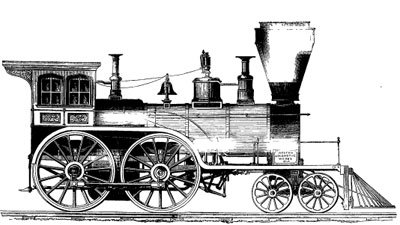|
Abstract
The
story of 300-plus Irish railroad workers, contracted in
New York in 1835 to work in Havana, Cuba, raises many questions
about their recruitment, experience and survival. Situating
their migratory experience within a context of race and
class politics, at a time of nationalist struggles on two
colonial islands on either side of the Atlantic, the position
of these migrants as colonised ‘Other’ within the Iberian
Atlantic system of slavery and colonial labour is highlighted.
The need to explore the relationship between an Irish identification
with subalternity, on the one hand, and the significance
of ‘the wages of whiteness’ to the Irish on the other, against
the backdrop of the Hispano-Cuban colonisation policy to
‘whiten’ the island’s majority black population is examined.
In concluding that there was some opposition by the Irish
to colonial rule and slavery in Cuba, the paper suggests
that the question of Irish identification with a subaltern
position merits closer investigation. |
|
Introduction
Cuba
is not usually associated with Irish immigrants, but in
the decades before the 1840s potato famine successive
waves of Irish people migrated to the Spanish slave colony.
In the early 1800s, Cuba and Latin America in general
were destinations for labourers who knew little about
the climate, customs or language and had no personal networks
to fall back on if things went wrong. The expectations
and ambitions of English and Irish emigrants heading to
Brazil in the 1860s were born of ignorance and desperation
and based on idealised images of ‘a land of mystery or
lush paradise’ (Marshall 2005: 7). Immigration schemes
targeting labourers were more often than not exploitative;
this was certainly the case with the importation of an
immigrant workforce to build the Cuban railroad. Described
as a bitter and shameful episode (Serrano 1973: 35), the
fate of 300 Irish railroad workers contracted in New York
in 1835 to work in Havana raises many questions about
their recruitment, the conditions they experienced, their
provenance and their survival; it also highlights their
position as colonised ‘Other’ within the Iberian Atlantic
system of slavery and colonial labour.
In
this paper, I propose to situate this particular episode
of Irish migration within the context of race and class
politics at a time of nationalist struggles on the two
colonial islands of the Atlantic world. The perceived
or real threat of a large population of oppressed “Others”
in the case of Catholics in Ireland and of enslaved
Africans in Cuba, especially their potential for inciting
mass insurrection from below, weighed heavily on the
cause for independence on both islands. Transformations
in the world economy and the societal imperatives of
colonial Ireland triggered a dynamic for the migration
of labour. The railroad workers’ position as colonial
others and British subjects was also coloured by the
Hispano-Cuban elite’s colonisation project, a policy
to ‘whiten’ the island’s majority black population and
assuage the fear of ‘el peligro negro’ (the black peril)
amongst its white minority elite.
Irish
Latin American Studies
Within
the broader context of Irish Latin American Diaspora
studies, Irish migration and settlement in the Spanish
Caribbean is one of the least researched areas to date.
Mary Harris, in her survey of ‘Irish Historical Writing
on Latin America,’ concludes that ‘weighty Irish academic
studies are very few indeed,’ despite a growing interest
and recognition of Irish communities in Latin America
(Harris 2006). Citing Edmundo Murray’s description of
nineteenth-century Irish immigrants in Argentina ‘as
English colonisers in a remote location of the Anglosphere’,
she underlines the challenge to historians who wish
to locate Ireland within the discourse of colonialism
(Harris 2006: 258). Historically, the close ties between
Ireland and Spain have complicated the Irish attitude
to Spanish colonisation, according to Harris, and she
posits that ‘Catholicism, rather than postcolonialism,
proved the strong point of identification with Latin
America’. In a short biography of James J. O’Kelly,
the Cuban scholar Fernando Ortiz distinguishes between
the conservative Irish who were supporters of the Spanish
colonial system in Cuba, such as the celebrated Irish
generals and/or merchants O’Reilly, O’Donnell, O’Farrill
and O’Gaban, and those other sons of Ireland who identified
with the anti-colonial struggle, including Richard Madden
and O’Kelly. Regarding Irish involvement in liberation
wars throughout South America, Ortiz concludes that
for the latter Irish, England was their Spain (O’Kelly
1930: 41).
Several Cuban academics researching the links between
Ireland and Cuba recognise that there are important Irish
influences in the economic, political and cultural development
of the island (see the article by Rafael Fernández
Moya in this journal). Some of the first registered settlements
of Irish communities in Cuba date back to 1817, though
Irish individuals and families found their way, voluntarily
or by force, to the West Indies much before that time.
Railroad
workers
During the months of November and December 1835, some
378 workers, most of them Irish, disembarked at the port
of Havana. All had been contracted in New York to work
for the Cuban Railway Commission. In a push to industrialise
the sugar industry in Cuba on the eve of the abolition
of the African slave trade, British investment paved the
way for building the first stretch of railroad in Ibero-America
between Havana and Güines. It was estimated that
a workforce of 1,500 men would complete the excavations
within a period of eight months. Benjamin H. Wright, the
engineer in charge, looked outside Cuba to recruit cheap
white wage labour of European descent. The Irish recruits
are described as being semi-skilled with experience in
explosives and railroad construction. A copy of one ship’s
passenger rolls lists forty-six men and six women, and
included artisans, labourers, mechanics, and overseers.
Five women are listed as wives; one woman was apparently
unattached to any of the men (Ballol 1987).
|

